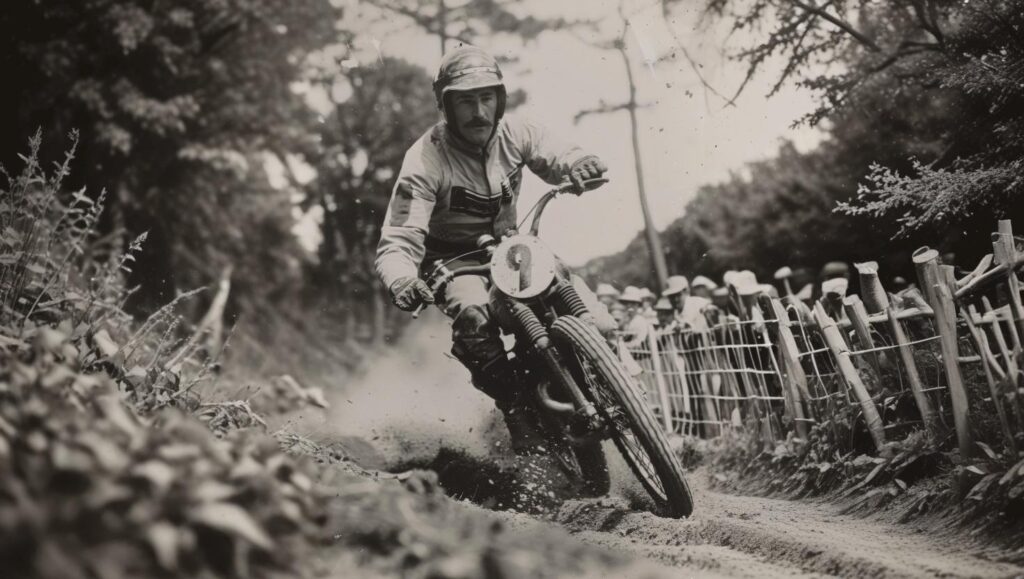Assessing the Condition of Your Vintage Mountain Bike
Before diving into the restoration process, it is crucial to assess the condition of your vintage mountain bike. This step is a valuable opportunity to set aside the excitement and look at the bike with a critical eye. Start by examining the frame, wheels, and components to understand what you are working with.
Checking the Frame
The frame is the backbone of your bike, and any signs of damage here can affect everything else. Look for:
- Cracks or dents: Pay close attention to the welds and joints.
- Rust: It’s common on older bikes, but it can be repaired, depending on its severity.
- Alignment: Ensure that the frame is straight; twisted frames can spell disaster on the trails.
Evaluating Components
Next, let’s take a gander at the components. You’re looking at anything that makes your bike go vroom!
- Wheels: Spin those wheels and check for true alignment. Wobbly wheels make for a bumpy ride.
- Brakes: Inspect the brake pads and cables. They should be intact and functional.
- Tires: Look for cracks and the remaining tread. Tires can be a pain if they’re too worn out.
- Drivetrain: Check the chain, sprockets, and derailleurs for wear and tear.
Gathering Tools and Supplies
Do you have a treasure trove of bike tools or are you starting from scratch? Either way, you will need some essentials for your restoration project. Gathering the right tools helps the process go a lot smoother and saves you from a mid-project run to the store.
Essential Tools
Here are some basic tools that will make your restoration easier:
- Socket set: This will help you deal with bolts of varying sizes.
- Chain tool: Essential for removing and installing a new chain.
- Screwdrivers: Both Phillips and flat-head for various components.
- Hex keys (Allen wrenches): These are vital for modern bike components.
- Pliers: Helpful for various adjustments.
Supplies You Might Need
Now that you’ve got your toolbox sorted, it’s time to think about supplies. Depending on the condition of your bike, you might need:
- Replacement parts: Tires, cables, brake pads, etc.
- Lubricants: Like bike oil or grease for moving parts.
- Cleaning supplies: Brushes, rags, and bike cleaner to give it a good scrub.
Disassembling the Bike
Now that you have everything you need, let’s get our hands dirty! Disassembling your bike might seem intimidating. Don’t worry, a little patience and attention to detail will go a long way. Plus, it is genuinely satisfying to see all those parts come apart.
Step-by-Step Disassembly
Here’s a simple step-by-step to guide you through disassembling your vintage mountain bike:
- Remove the front wheel: Loosen the quick-release lever or axle nuts.
- Take off the rear wheel: Repeat the process for the back wheel.
- Detach the handlebars: Unscrew the stem and pull it free.
- Remove the seat: Typically, this involves loosening an Allen bolt.
- Take off the crankset: Use the crank puller tool to safely remove it.
- Remove the pedals: Remember to turn them in the opposite direction for removal.
Cleaning and Restoring Parts
Once disassembled, you will likely find some parts that are caked with dirt and grime. This is where the cleaning comes in. A clean bike not only looks great but also performs better.
Cleaning Techniques
For cleaning, you’ll want to avoid harsh chemicals to protect your vintage bike’s finish. Here are some recommended cleaning techniques:
- Frame cleaning: Use warm, soapy water and a soft cloth or sponge. Rinse thoroughly.
- Chain and gears: Utilize a degreaser specifically designed for bikes, followed by a good scrub and rinse.
- Wheels and tires: A stiff brush can help remove muck, followed by a rinse to wash away debris.
Repairing Damaged Parts
If you discover any parts that need repair, there are several options:
- Rust treatment: Try using a rust remover followed by paint touch-ups when necessary.
- Brake pads: Replace worn out pads for effective stopping power.
- Tires: If they are beyond cleaning, consider investing in new ones.
Reassembly Process
After everything has been cleaned and repaired, it’s time for the fun part—reassembling your bike! You might be surprised at how putting it all back together can feel like a puzzle.
Step-by-Step Reassembly
To reassemble, just reverse the disassembly steps:
- Attach the pedals back: Turn them in the correct direction to screw them in.
- Reconnect the crankset: Ensure all parts fit snugly and use the crank tool for proper installation.
- Reattach the seat and handlebars: Align them correctly and tighten securely.
- Install the rear wheel: Make sure it is properly seated and aligned.
- Finally, attach the front wheel: Double-check that everything is secure and aligned.
Final Adjustments and Test Ride
Once your bike is fully reassembled, it’s vital to make some final adjustments. Adjust the brakes and gears for optimal function. You want everything to run as smoothly as possible so you can enjoy the ride.
Adjusting Brakes and Gears
Here are a few quick tips for adjustments:
- Brakes: Squeeze the levers to check alignment. Adjust pads as necessary.
- Derailleurs: Shift through all gears to ensure smooth transitioning and adjust the limit screws if needed.
Test Ride
Now comes the ultimate test—a ride! Take it easy at first. Go for a short jaunt around your neighborhood. Listen for any odd noises and check how it feels on the road or trail. Adjust any components as needed based on this ride.
Maintaining Your Restored Vintage Mountain Bike
Congrats! You’ve successfully restored a vintage mountain bike. However, the journey doesn’t end here. Regular maintenance will keep your bike in prime shape. Here are some easy maintenance tips:
- Regular cleaning: Clean your bike after rides, especially off-road ones.
- Lubrication: Keep the chain lubricated to ensure it operates smoothly.
- Tire checks: Inspect tire pressure and tread before every ride.
Conclusion
Restoring a vintage mountain bike is not just a hobby; it is an adventure that rewards you with a unique ride. With patience, the right tools, and a bit of elbow grease, you can bring a classic back to life. So go ahead, take that restored bike out for a spin, and enjoy the fruits of your labor! Who knows what trails lie ahead?






